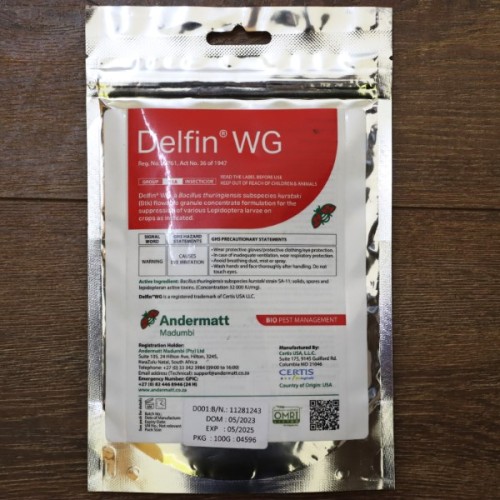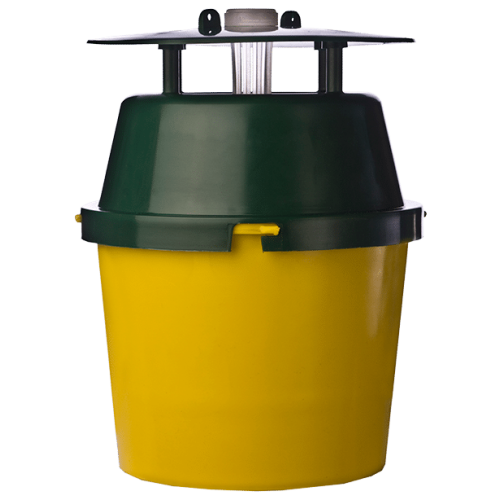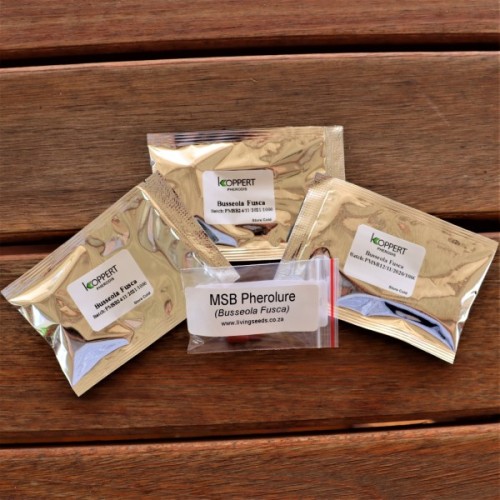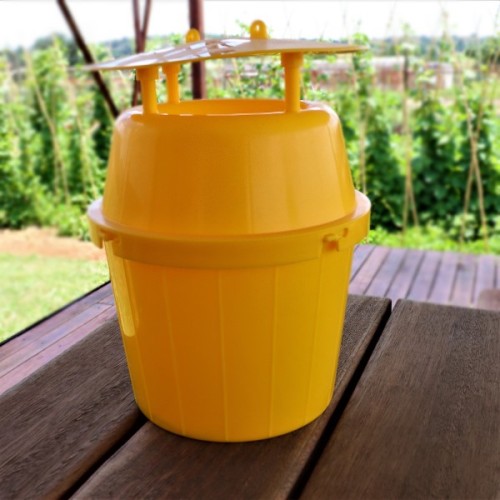Maize Stalk Borer
Busseola fusca
Maize stalk borer, Busseola fusca, is one of the most devastating pests of maize and sorghum across South Africa. The adult moth lays its eggs on the lower leaves, and once hatched, the larvae bore into the stem, disrupting nutrient flow and causing severe stunting, lodging, and poor cob development. This hidden feeding makes the pest especially destructive, often unnoticed until the damage is already extensive. In warm climates, the pest can complete multiple generations per season, compounding its impact across successive plantings.
Maize plants that are badly infected are "dead-headed" with the top of the plant dying due to feeding action. If pulled, the larvae can be generally extracted and fed to chickens or simply squashed.
The key to managing maize stalk borer lies in early detection and layered prevention. Once larvae have bored into stalks, they’re shielded from most sprays and biological controls. Monitoring adult moth activity through pheromone trapping allows for timely interventions before egg-laying occurs. This proactive approach reduces larval numbers, prevents tunneling damage, and limits the need for late-season interventions which are typically less effective and more costly.
Culturally, maize stalk borer can be suppressed by planting trap crops like Napier grass around field edges and intercropping with desmodium, which repels egg-laying females. Destroying crop residues after harvest also interrupts the pest’s life cycle. When pest pressure is high, applying a biological spray like Delfin WG or BioBass at first trap detection offers a safe and effective control measure, especially against early larval stages.
-
Traps/Monitoring
-
Maize Stalk Borer Trap System
A complete pheromone-based funnel trap system used to attract and trap adult male moths. Enables early detection and timing of interventions. Replace lures every 4 weeks. -
Maize Stalk Borer Pherolure (4 Pack)
A pack of four replacement pheromone lures to maintain trap efficacy throughout the growing season. -
Funnel Trap : Trap Only
A sturdy, reusable yellow funnel trap that works with MSB pheromone lures. Effective for monitoring multiple locations. -
Delta Trap : Trap Only
Lightweight alternative to the funnel trap for small-scale monitoring. Uses sticky inserts and compatible pheromone lures.
-
Biologicals
-
Organics
-
Spraying inside the crown with Neudosan at first trap detection is also an effective treatment, however this must be repeated on a weekly basis.
-
Andermatt - Delfin WG (Ecobuzz Larvae Pro)
Delfin WG previously known as Larvae Pro is a Bacillus thuringeinsis bacteria of a specific strain t..
R225.63
Biogrow Neudosan
Neudosan is formulated using potassium salts of fatty acids. A natural organic contact insecticide t..
R142.91
Delta Trap : Trap Only
These cost-effective, readily assembled traps are easy to use enabling fast implementation for a q..
R167.49
Funnel Trap : Trap Only
This is the most advanced Bucket Funnel Trap® in the global market. Lures available separatelyWork..
R182.31
Maize Stalk Borer Pherolure
MSB PherolureSold in 1 x pack of 4 luresPheromone base lure that attracts the males effectively remo..
R268.07
Maize Stalk Borer: Trap System
Yellow Funnel Trap + MSB PherolureMaize Stalk Borer is a common pest for grain growers across Africa..
R241.10
Soygro BioBass
Biobass is a biological insecticide developed with Beauveria bassiana, a naturally occurring soil fu..
R38.92







